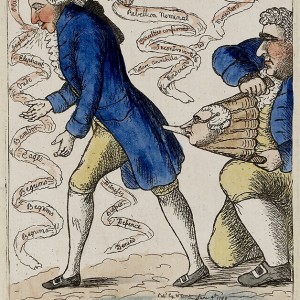Wren’s House of Commons was the setting for momentous changes in English political life, including the crystallization of political parties, Catholic Emancipation and parliamentary reform.
But the Chamber was cramped and increasingly unfit for purpose.
After the sensational rediscovery of medieval paintings, the fabric of the ancient chapel became an object of growing public interest from the 1790s. The east façade of the building was re-Gothicized in 1805.
Explore more about the social, political and historical aspects of the House of Commons during this period below.
















